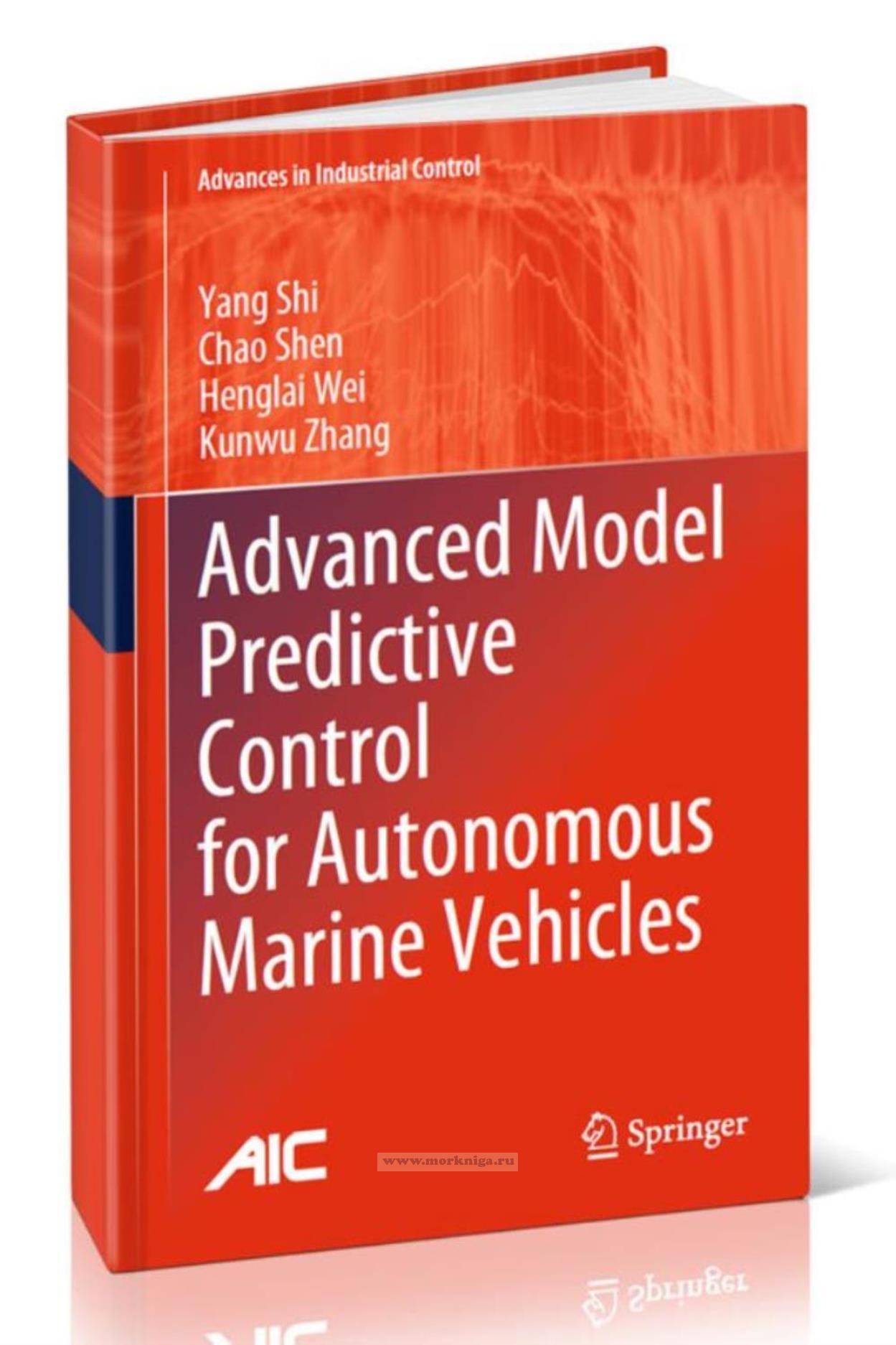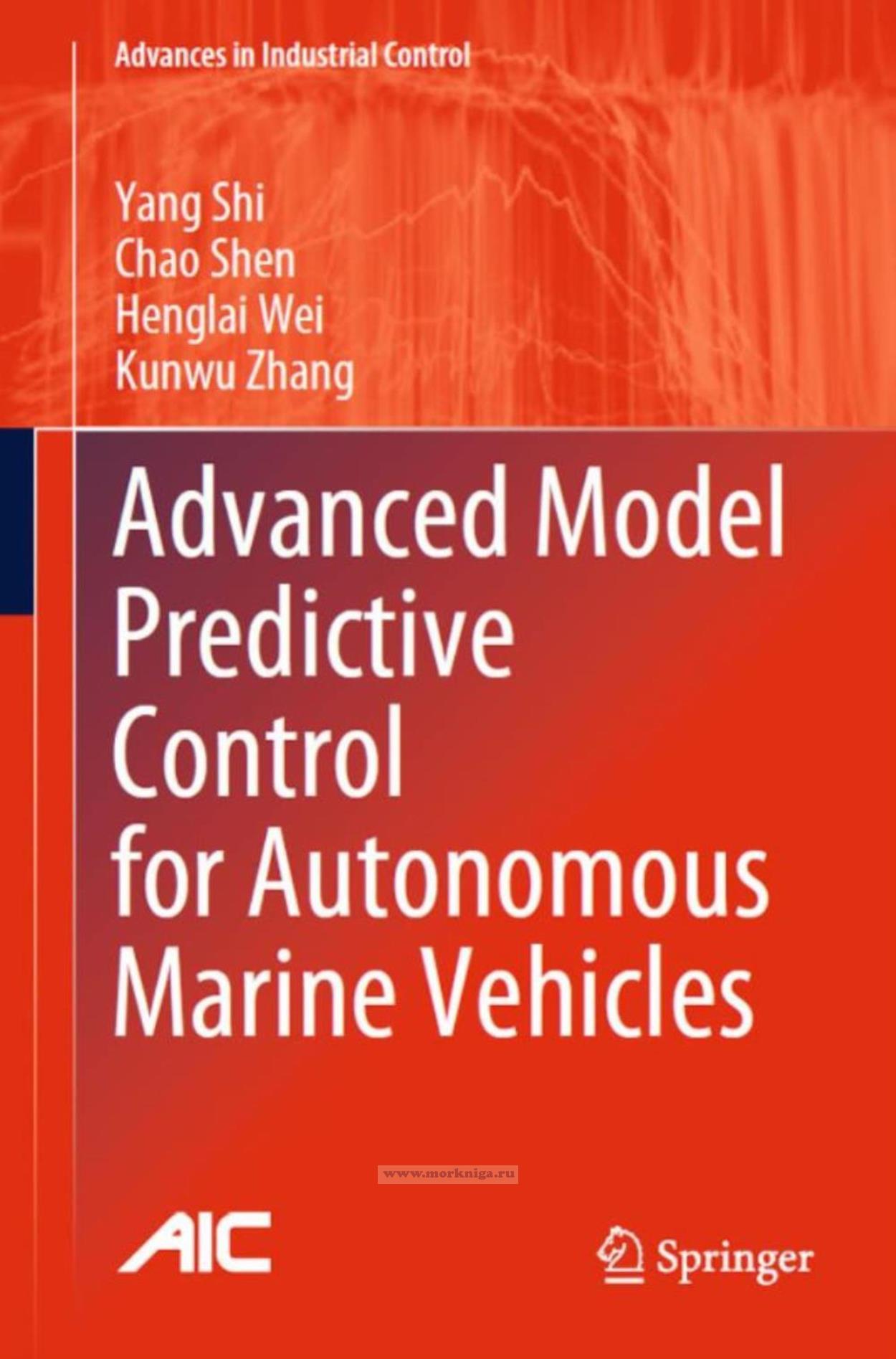Advanced Model Predictive Control for Autonomous Marine Vehicles/Усовершенствованное управление с прогнозированием модели для автономных морских транспортных средств
Книга на английском языке
The ocean covers about 72% of the earth’s surface, but most of the area has not yet been explored. There is an increasing demand for advanced technologies and equipment to explore and exploit the ocean for broad applications, such as tidal energy harnessing, deep ocean exploration, ocean resource investigation, emergency operation support, sustainable ocean environment protection, etc. These challenges and novel applications spur a surge of interest in the research and development of autonomous marine mechatronic systems. Autonomous marine vehicles (AMVs) are those systems with the integration of electronics, mechanics, advanced sensors and actuators, and control algorithms applied in the maritime environment. AMVs play an essential role in performing marine tasks such as offshore inspections, ocean exploration, and transportation, which require effective and reliable motion control systems. Motion control design for AMV systems is challenging, especially when the physical constraints, the control performance, the safety, and the robustness of these systems need to be simultaneously considered. In the past several decades, various advanced control strategies have been proposed for some representative systems in this area. Among these approaches, model predictive control (MPC) is an emerging and promising control scheme.
Contents
1 Introduction
1.1 Autonomous Marine Vehicles
1.1.1 Overview
1.1.2 The Motion Control Problems
1.2 Model Predictive Control
1.2.1 The Receding Horizon Control Strategy
1.2.2 Stability of MPC
1.2.3 MPC for the Motion Control of AMVs
1.3 Motivations of the Book
1.4 Outline of the Book
1.5 Notes and Summary
References
2 AMV Modeling
2.1 Kinematics of AMVs
2.1.1 Reference Frames
2.1.2 Transformation Between Reference Frames
2.2 Nonlinear Dynamics of AMVs
2.2.1 Rigid-Body Dynamics
2.2.2 Hydrodynamic Forces and Moments
2.3 AMV Model for Motion Control Design
2.4 Notes and Summary
References
3 Receding Horizon Optimization for Integrated Path Planning and Tracking Control of an AUV
3.1 Introduction
3.1.1 Research Background and Contributions
3.1.2 Chapter Organization
3.2 Problem Statement
3.3 Minimum Curvature Receding Horizon Path Planning
3.4 Nonlinear Model Predictive Tracking Control
3.5 Integrated Receding Horizon Path Planning and Tracking Control: Algorithm Description
3.6 Simulation Study
3.6.1 Parameter Selection
3.6.2 Tracking Performance
3.7 Notes and Summary
References
4 Lyapunov-Based Model Predictive Control for Dynamic Positioning and Trajectory-Tracking Control of an AUV
4.1 Introduction
4.1.1 Research Background and Contributions
4.1.2 Chapter Organization
4.2 LMPC Design for Dynamic Positioning Control
4.2.1 Problem Formulation
4.2.2 Main Results
4.2.3 Simulation Study
4.3 LMPC Design for Trajectory-Tracking Control
4.3.1 Problem Formulation
4.3.2 Main Results
4.3.3 Simulation Study
4.4 Notes and Summary
References
5 Multi-objective Model Predictive Control for Path-Following Control of an AUV
5.1 Introduction
5.1.1 Research Background and Contributions
5.1.2 Chapter Organization
5.2 Problem Formulation
5.2.1 The Path-Following Problem
5.2.2 Zero-Path-Error Manifold
5.2.3 The MOMPC Formulation
5.3 Solve the MOMPC Problem
5.3.1 Weighted-Sum Method
5.3.2 Lexicographic Ordering Method
5.4 Convergence Analysis
5.5 Simulation Study
5.5.1 PF Control Using WS-MOMPC
5.5.2 PF Control Using LO-MOMPC
5.5.3 Robustness Test
5.6 Notes and Summary
References
6 Distributed Lyapunov-Based Model Predictive Formation-Tracking Control for AUVs Subject to Disturbances
6.1 Introduction
6.1.1 Research Background and Contributions
6.1.2 Chapter Organization
6.2 Problem Statement and Preliminaries
6.2.1 AUV Modeling
6.2.2 Problem Formulation
6.3 Distributed Lyapunov-Based Model Predictive Formation-Tracking Control
6.3.1 Design of the Auxiliary Control Law
6.3.2 Design of the Optimization Problem
6.3.3 Feasibility and Stability Analysis
6.4 Simulation Study
6.4.1 Simulation Setup
6.4.2 Formation Tracking with Collision Avoidance
6.4.3 Multi-AUV Formation Tracking with Disturbances
6.5 Notes and Summary
References
7 Robust Distributed Model Predictive Platooning Control for Heterogeneous Autonomous Surface Vehicles
7.1 Introduction
7.1.1 Research Background and Contributions
7.1.2 Chapter Organization
7.2 Problem Setup
7.2.1 Autonomous Surface Vehicle Modeling
7.2.2 ASV Platoon Modeling
7.2.3 Control Objectives
7.3 Robust Distributed Model Predictive Platooning Control
7.3.1 DMPC Optimization Problem
7.3.2 The Auxiliary Controller
7.4 Theoretical Analysis
7.5 Simulation Study
7.6 Notes and Summary
References
8 Efficient Implementation Algorithms for NMPC-Based AUV Trajectory-Tracking Control
8.1 Introduction
8.1.1 Research Background and Contributions
8.1.2 Chapter Organization
8.2 Modified C/GMRES Algorithm
8.2.1 Problem Formulation
8.2.2 Solving the NMPC Problem
8.2.3 Modified C/GMRES Algorithm
8.2.4 Simulation Study
8.3 Distributed Implementation Strategy
8.3.1 Problem Formulation
8.3.2 Solving the NMPC Problem
8.3.3 Distributed NMPC Implementation
8.3.4 Simulation Study
8.3.5 Robustness Test
8.4 Notes and Summary
References
9 Concluding Remarks
9.1 Summary of the Book
9.2 Future Missions
9.2.1 Some Fundamental Questions
9.2.2 Some Tractable AMV Research Directions
References
Appendix A
Index

